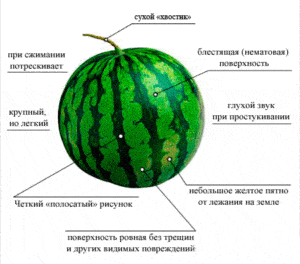Description of the watermelon variety "Foton", characteristics and subtleties of cultivation, yield
One of the favorite treats of people around the world during the summer is watermelon. Nothing refreshes and quenches your thirst like juicy and tasty pulp. It is not necessary to buy a watermelon in the store, because the fruit can be grown on your site and feasted on at any time. We'll look at the watermelon known as the Photon. We will find out its advantages and disadvantages, as well as the rules for growing.
Characteristics and advantages of the variety
Description of the advantages of the variety:
- Produces a good harvest. With proper care, up to 7 kilograms of product are collected from one square meter.
- Accelerated growth and maturation rates.
- Not susceptible to most diseases.
- If necessary, transported over long distances.
- For cultivation does not require special agricultural equipment.
Specifications:
- large fruit;
- the minimum weight of a ripe watermelon is 4 kilograms;
- juicy flesh of bright pink color;
- oblong shape;
- green fruit with pronounced dark stripes.
History of origin and regions of growth
For the first time, watermelon became known in South Africa. Subsequently, thanks to its taste, it quickly spread throughout the world. Today there are many varieties cultivated for cultivation in different regions.
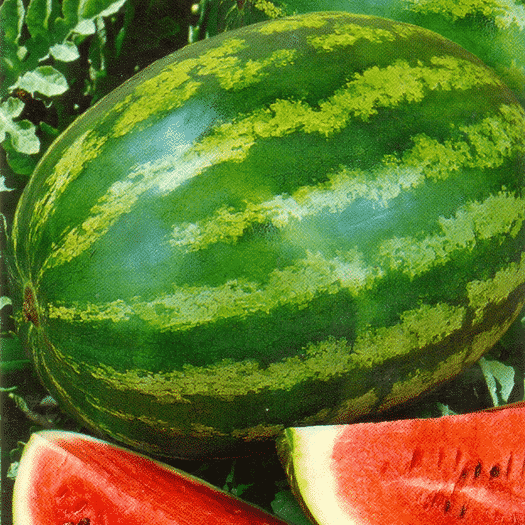
Variety "Photon" emerged as a result of hybrid products that can grow not only in hot countries. Such a watermelon is grown both in the southern regions of the country and in the northern ones.
When to start planting watermelons
Any harvest depends on whether the planting time is right, and watermelon is no exception. Photon is best planted in late April or early May, as it ripens for 85 days.
Thus, the maximum yield is achieved, and the fruits of the watermelon will be ripe and juicy.
Berry planting technology
Each product grown in the garden has its own planting and growing technology. Watermelon is no exception, and to obtain a positive effect, you need to be guided by the following algorithm:
- sow seeds to harden them before planting in open ground;
- grow seedlings;
- form and tie sprouts;
- harvest.

There are nuances at each stage that we will consider separately.
Sowing seeds
The seeds are planted in separate containers and grown for 10 days, before the first shoots appear - this will allow the seedlings to harden.As soon as the seeds have sprouted, the containers are removed to a sunny place, since the watermelon is a heat-loving plant. In this state, they continue to grow for another 20 days, after which they are planted in their summer cottage.
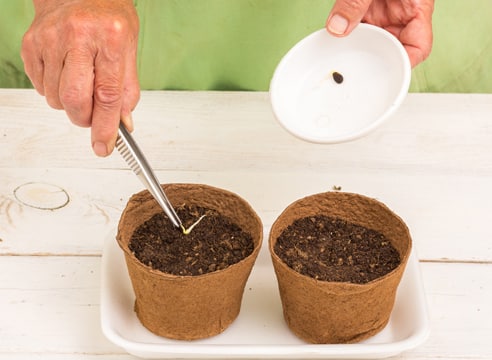
Experienced gardeners advise to immerse them in hot water for a quarter of an hour before planting seeds. The water temperature should not exceed 60 o. Alternatively, instead of being immersed in liquid, the seeds are wrapped in damp gauze or tissue. The best soil for growing seedlings is a mixture of peat, earth and sand. Note! It is best to plant ready-made seedlings outdoors.
Growing seedlings
To properly grow seedlings, you will need:
- Choose a place that will be illuminated for the longest possible period of time. The best option is when the seedlings are exposed to sunlight for at least 10 hours.
- Watering should be abundant, but do not overdo it.
- Loosen the soil around the sprout so it gets more nutrients.
- The temperature in the room with seedlings should be maintained at 23 o. Deviations of a couple of degrees up or down are possible.
- After 12 days from the moment the sprouts appear, organize feeding the seedlings with a special complex of non-organic fertilizers.
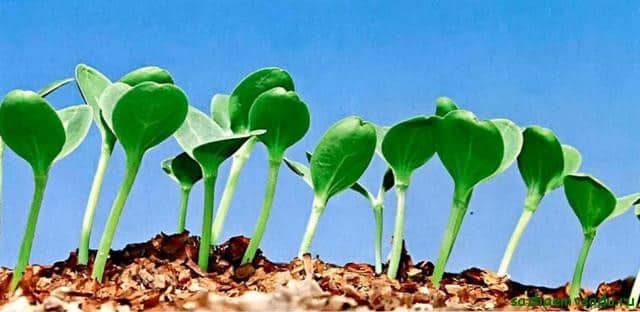
Shaping and tying
Seedling formation is an important step in growing a watermelon. The thing is that shoots constantly form shoots on which fruits are formed. If the excess is not removed, the plant will not be able to feed all the branches. You will end up with many long shoots on which small watermelons have grown. To avoid this, choose the correct scheme, guided by which you will form and tie up the watermelon.
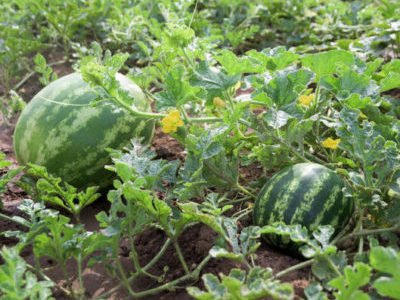
There are two, the most common, schemes:
- In each bush, one whip and one fruit is left, which was the first to form. The rest of the lateral shoots are removed, and the leaves that are further from the fruit are pinched. This method is beneficial in that you are guaranteed to grow a good large fruit, and it will take much less time and effort. Agronomists say that it is easier to grow several dozen bushes with one fruit than 10, but with 2-3.
- If you want to take a chance and try to grow 3 fruits on one bush - leave the main whip and two side ones to grow. It is best to leave the side lashes that grow near the third and fourth leaves. When the lashes are finally formed and fruits are formed on them, it is necessary to organize plucking over the fifth leaf from each first fruit on the lash.

Harvesting
The crop can be harvested in late August and early September. A more accurate time is determined by the presence of the following signs:
- the fruit has a rich smell;
- the pattern on the peel stands out clearly;
- if you knock on a watermelon, a dull sound is heard;
- the tails of the watermelons begin to dry out a little.
These signs indicate that the crop is ripe and ready to be harvested.

How to create conditions for good yields
Not everything will depend on you, as climate and weather will have a big impact on the quality of the crop. To increase your chances of achieving the expected result, you will need:
- water the beds competently, maintaining optimal humidity;
- fertilize the soil in a timely manner, saturating it with the elements necessary for the growth and formation of the fruit.
Watering and moisture
The watermelon has a strong root system, so watering the beds is not a major problem. The plant does not need to be watered often, the main thing is to do it abundantly. For 1 square meter, watering is considered sufficient, equal to 3 buckets of water.During the formation of ovaries, moisten the soil at least once every 2 weeks. When the ovaries have formed and the fruits have begun to ripen, the frequency of watering is reduced.
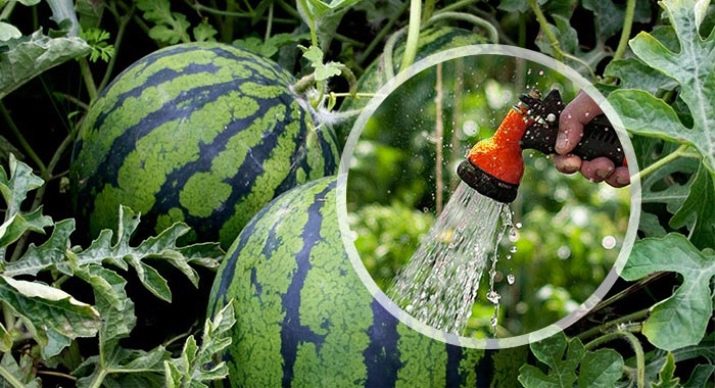
Important! After each watering, you need to slightly loosen the soil around the plant.
Timely fertilization
Timely fertilization of the crop is essential at all stages of growing. There are 5 such stages in total:
- fertilizing the soil before planting watermelon seeds;
- when transplanting mature seedlings into open or closed ground;
- fertilization during the flowering period;
- during the formation of fruits;
- in the process of their maturation.
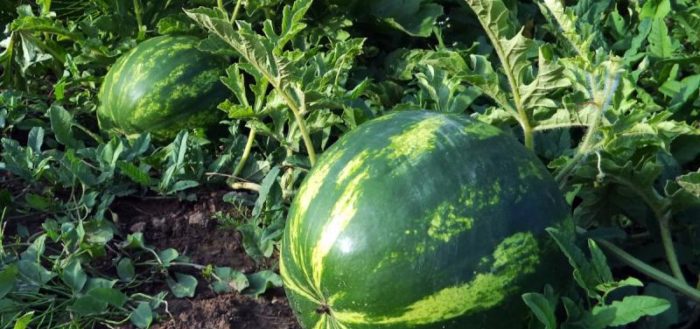
When fertilizing the soil, follow these rules:
- it is desirable to feed the land with mineral-based fertilizers;
- the composition of fertilizers must necessarily contain elements such as nitrogen and phosphorus;
- during the flowering period of watermelon, it is important to focus on fertilizers containing a high potassium content;
- if longitudinal yellow stripes are formed on the fruits, this means a lack of boron in the ground.
These are general rules that will allow you to get a decent harvest. As a tip, I would like to note that you should not overdo it with fertilizers either, as this will lead to undesirable consequences. Remember - everything should be in moderation!
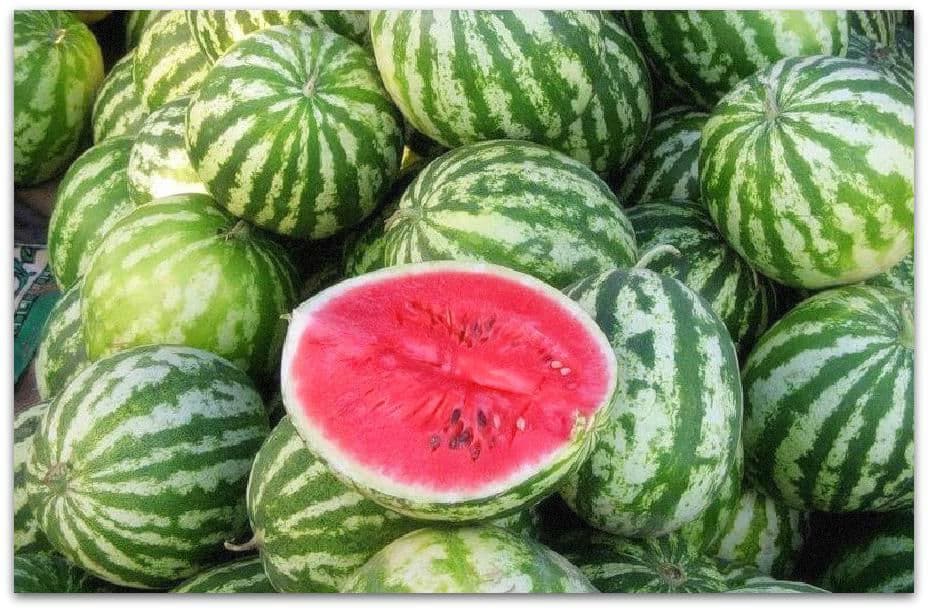
What difficulties arise when caring for a watermelon
The main difficulties when growing a watermelon include the following things:
- Competent selection of the site where the product will be grown. The soil should be light and free to pass moisture.
- To protect watermelons from pests, you need to carefully weed the beds from weeds and mow excess grass around the site.
- In case of sudden cold snaps or freezing, take care of the protection of the fruit.
- Excessive soil moisture will provoke the growth of pests. In case of heavy rains, check the planting site periodically. There is a risk that a harmful fungus or aphid will start on the fruits.
For the rest, the cultivation of watermelons is not fraught with particular difficulty and, if you competently and thoughtfully approach all the stages, you will get a tasty and juicy harvest at the end.

